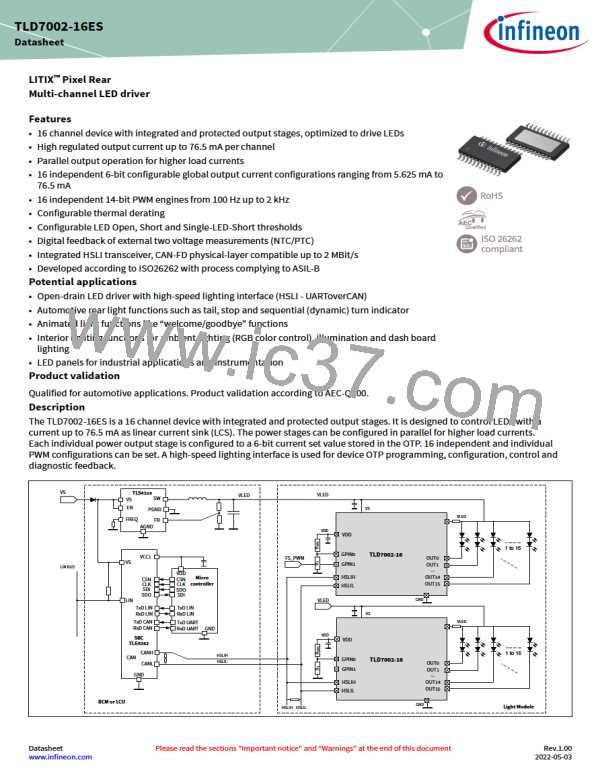TLD7002-16ES
Datasheet
7 Load Diagnostic
•
•
fault management configuration is set to "1" AND
a load fault is detected in the previous ACTIVE phase
The reconfirmation cycle starts afer a fault detection by moving the device in the INIT phase with outputs OFF. The
INIT phase persist for at least treconf time.
In case of HSLI control, the ACTIVE phase is trigger by a DC_UPDATE command with a delay of treconf. The DC_UPDATE
command will also clear the fault flags to allow the reconfirmation procedure. Once in ACTIVE phase, a DC_SYNC
command is needed to turn on only the failing output for ((2 + ndebounce) x PWM period) time.
In case of direct control via GPIN, the ACTIVE phase is trigger by a GPIN HIGH with a delay of treconf. The fault flags (OL,
SLS, OVLD) are cleared automatically at the beginning of the treconf. Once in ACTIVE phase only the failing output is
turned on for ((2 + ndebounce) x PWM period) time in order to reconfirm the load fault. In case the failure is reconfirmed,
the device moves to the INIT phase again. If the fault condition is not detected during ACTIVE ON, for more than
(ndebounce x PWM period) time, the device will enable also the other outputs
The status of the reconfirmation cycle can be checked via HSLI in the reconfirmation status register.
Note: In an HSLI application (no GPINn activations requests), the load fault shall be read with a READ_OST frame
before the DC_UPDATE frame.
Open load on OUT1
ACTIVE ON
ACTIVE ON
OUT1
OUTn
ERRn
OL FLAG
RECON_FLAG
RECONFIRMATION CYCLE
HSLI commands
DC_SYNC
DC_SYNC
READ_OST
DC_UPDATE
DC_UPDATE
DC_SYNC
Device Status
ACTIVE
2+nDebounce PWM
ACTIVE
INIT
treconf
ACTIVE
INIT
treconf
1+nDebounce PWM
2+nDebounce PWM
Normal
Operation
OUT1 Open Load
OUTn Normal Operation
Normal
Operation
Application
Status
Figure 14
Load fault reconfirmation cycle with HSLI
Datasheet
40
Rev.1.00
2022-05-03

 INFINEON [ Infineon ]
INFINEON [ Infineon ]